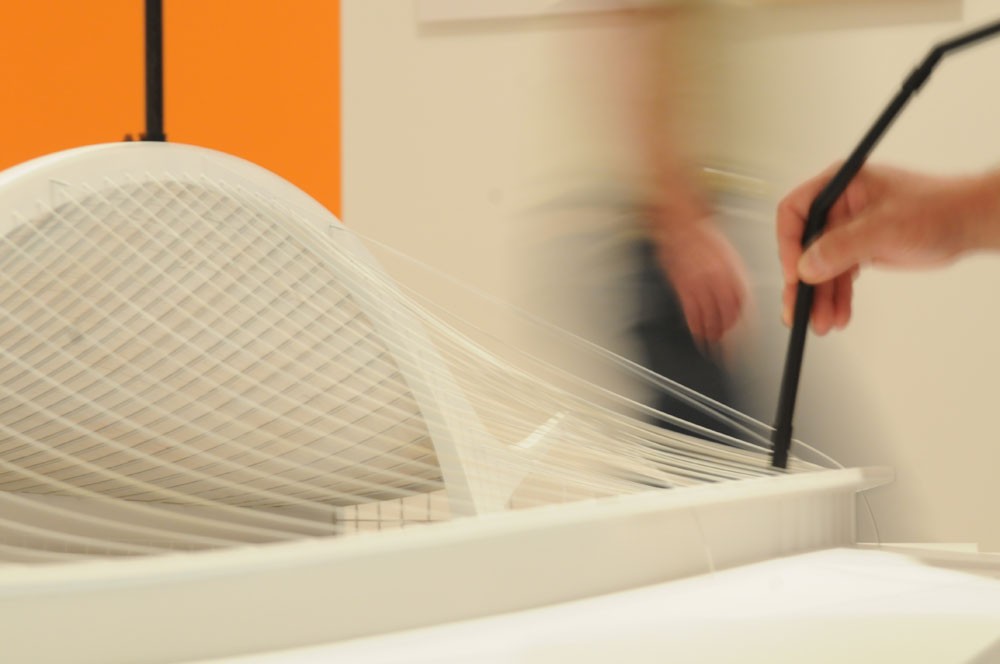WHAT: âÄúEero Saarinen: Shaping the FutureâÄù WHEN: September 13-January 4 WHERE: Walker Art Center: 1750 Hennepin Ave., Minneapolis, Minneapolis Institute of Arts: 2400 Third Ave. S., Minneapolis TICKETS: Walker: $6 Students, MIA: Free Eero Saarinen is an architect renowned for his ability to transcend artistic barriers and create differentiated, highly specialized structures. He is best known for tailoring his designs specifically to the needs of his client. That may sound obvious, but it really shook up the world of professional architecture, replacing the previous âÄúarchitect knows bestâÄù attitude. âÄúEero Saarinen: Shaping the FutureâÄù is a joint exhibition at the Walker Art Center and the Minneapolis Institute of Arts featuring sketches, models and photographs illustrating the short but proliferative career of one of the most innovative architects of the 20th century. Saarinen, a Finnish-American who exploded onto the modern architecture scene shortly after World War II, is best known for his exploration of all forms of design, from large and complex corporate and college campuses to pod-shaped elevators and sleek, flowing furniture. In a time when cookie-cutter houses were being manufactured for returning war veterans, Saarinen dared to explore new possibilities in spatial presentation and construction materials. This collection of Saarinen’s work is the first all-inclusive, retrospective examination of his design portfolio. The exhibition showcases about two thirds of Saarinen’s work in the Walker’s Target Gallery and the other third in the large exhibition space in the Minneapolis Institute of the Arts. The exhibition is divided into rooms based upon the subject matter of Saarinen’s work, punctuated by large metallic quotes printed on the walls. The Walker features Saarinen’s work on classical furniture, expansive college campuses, complex interior design featuring inset âÄúconversation pits,âÄù and machine-like corporate spaces, while MIA’s portion examines airports, embassies and memorials, with a special look at Christ Church Lutheran in Minneapolis. One of the entrance rooms to the exhibition at the Walker features the sleek furniture design of the pedestal chairs, and tables, supported by a thin column instead of four separate legs, an iconic furniture style that rose from Saarinen’s attempt to âÄúclear up the sum of the legs.âÄù As he explained in a quote on a nearby wall, âÄúI wanted to make the chair all one thing again.âÄù Throughout the exhibit, it is easy to find Saarinen’s influences on modern architecture, from his foray into mirrored glass (which has nearly become an architectural cliché), a design of a new elevator to reach the top of the U.S. Jefferson National Expansion Memorial in St. Louis (yes, that instantly recognizable arch of steel), and experimentation with reflective pools. Andrew Blauvelt, design director and curator of the Walker Art Center, believes that Saarinen’s progressive designs and material âÄúspeaks to architecture today and, sometimes, what architecture today isn’t,âÄù namely, innovating, inspiring and effortlessly functional. Further into the gallery, we catch glimpses of Saarinen’s creative process. The room featuring Saarinen’s work on college campuses, including preliminary sketches of the sprawling Brandeis University campus in Waltham, Md., and a breathtaking sculpture of the sweeping David S. Ingalls Hockey Rink designed for Yale. The exhibit goes on to feature huge corporate campuses, a novel idea at the time, such as the IBM Campus in Rochester, and John Deere World Headquarters, using self-rusting steel, reflecting pools and specially designed furniture. Saarinen’s indelible mark on each work is the complete design of the environment. Instead of simply erecting a mass of steel that houses hundreds of cubicles, Saarinen defines a relationship between a space and its functions. His process also integrates the symbolic use of materials during construction. When designing Ford Motor Company Headquarters, Saarinen inset windows using the same process Ford uses to seal windshields, and worked with tire rubber to integrate FordâÄôs manual labor and raw products with their business space. Saarinen’s expanse of techniques, styles and subjects are enthralling in their number and diversity, integrating masterful use of smooth curves and machine-like rigidity with the amazing precision hardly available today without the use of computers. âÄúShaping the FutureâÄù is an exploration of flourishing creativity that has echoed far beyond the projects themselves and reverberated into nearly every form of modern design.

Image by Jennifer Whalen
Killer Curves
Published September 11, 2008
0
More to Discover







